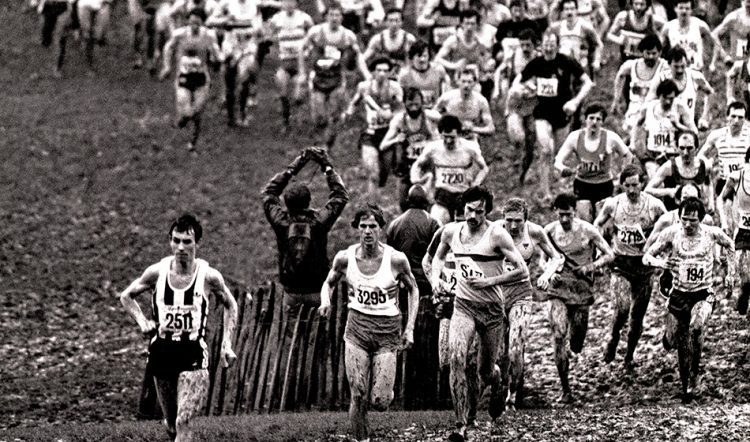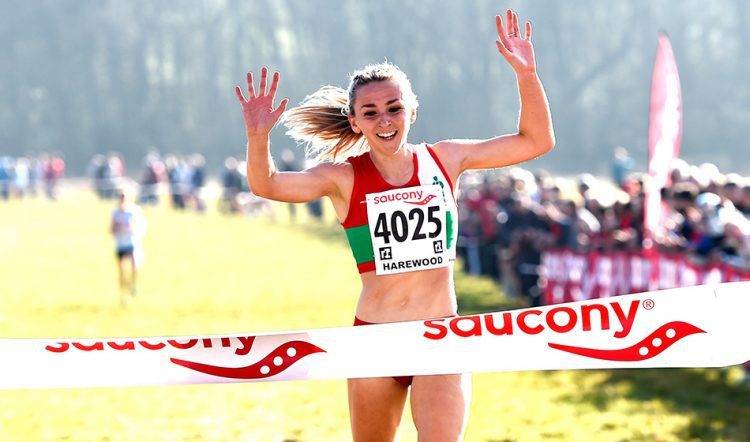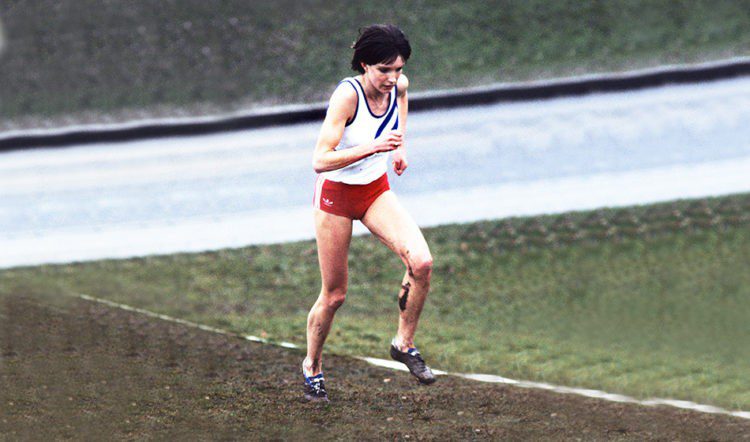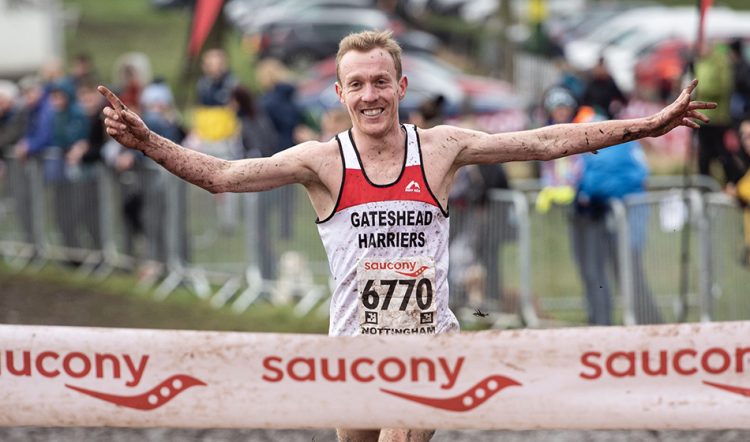It was not the most auspicious of starts. The first English men’s National Cross-Country Championships, at Buckhurst Hill in 1876, saw just 32 competitors run and the race was declared void due to every runner going off course!
Instead, the championships were completed for the initial time the following year, at Roehampton, where Percy Stenning crossed the line first.
It was a feat he would go on to repeat for the following three years, while he also led his team, Thames Hare and Hounds, to victory in both 1877 and 1879. The Roehampton-based club are still going strong, too, over 140 years later.
Only one athlete has matched the achievements of winning four titles in a row since – the famous South London Harrier and world record-breaker Alf Shrubb, who came out on top from 1901 to 1904.
I went to my first “English National” just under 50 years ago, at Parliament Hill in 1973. Just a few months before setting a world record on the other side of London at Crystal Palace, Dave Bedford won the title but lost the race as was beaten by a guesting Rod Dixon, New Zealand’s 1972 Olympic 1500m bronze medallist.
At the time, British male distance runners were among the world’s very best and the race over nine miles was one of the most keenly contested and highest quality distance events on the planet.
From the 1960s to the early 80s, it was rare for a National winner not to have won a major championship medal or to have set a record and, over this glorious period, there were wins for Olympic medallists Basil Heatley, Brendan Foster and Mike McLeod, European medallists Ron Hill, Mike Tagg, Trevor Wright, Tony Simmons and Tim Hutchings and Commonwealth medallists Dick Taylor, Dave Black, Nick Rose, Julian Goater and Eamonn Martin, as well as the world record-breaking Mel Batty.

Before the marathon boom the National was also one of the biggest races. Mass crowds of runners were a rarity then, so the field of around 2000 senior men’s participants meant that the start was one of the most colourful and exciting sights in sport.
Each club back then was limited to just nine senior male athletes (it is limitless now) and there was huge competition to just make the start line. I remember being disappointed not to be selected a few times, despite being in sub 2:30 marathon shape, and my club were nowhere near challenging for a leading place.
As well as Bedford’s run, I can still vividly recall some of the exceptional performances which unfolded at my earlier National visits – whether that be Brendan Foster out-kicking Tony Simmons and Bernie Ford in 1977 at Parliament Hill, Ford winning a titanic battle against Ian Stewart at Leeds the following year or Goater winning by two minutes from Dave Clarke, Mike McLeod ,Dave Moorcroft and Steve Jones – also in North London – in the mud in 1981.

If there was one National I would have liked to have seen, though, it would have been Sydney Wooderson, a world 880 yards and mile world record-holder and the reigning European champion, winning in his last major race in 1948 to end a glorious career.
When it comes to team performances on the men’s side, Birchfield are easily the most dominant senior outfit with 27 wins, albeit they have only won the title once since 1953 (in 1988).
Another Birmingham-based club – Tipton – are the most successful post-war side with 12 wins, while Tonbridge, with three wins in the last four events, are the current dominant force.
Women’s National
The first English Women’s National was held at Luton in 1927 and won by Anne Williams, however it was the 1928 victor Lilian Styles who was the most successful athlete thanks to winning six times between 1928 and 1937.
Unusually, Styles won in the colours of three different clubs – Littlehampton Ladies, Haywards Heath Ladies and London Olympiades.
Other individuals who dominated were Pam Davies and Rita Ridley, who successively won four titles in a row to dominate the mid-sixties and early seventies, though the most remarkable achievement was probably the eventual first London Marathon winner Joyce Smith winning in 1959 and 1960 (as Joyce Byatt) and then returning to win in 1973.
In between she also finished second in 1966, 1967, 1970, 1971 and was third in 1965, 1974 and 1978.
Multiple victories became harder to achieve in the period which followed and, after Ridley’s 1974 win, no-one was able to secure more than one win until Jane Shields followed her 1984 success with gold in 1987.
The only athlete to defend their title in the 30 years between 1972 and 2001 was Andrea Whitcombe, who won in both 1990 and 1991.

Up to that point, the men’s and women’s events were separate but, finally in 1995 at Luton, there was the first mixed National.
In terms of senior women’s team titles, Aldershot are the most successful team of the moment, having won six of the last eight but Birchfield top the list with 13 wins since 1927.
Parkside won it eight years in a row from 1989 to 1996 but curiously hadn’t won it before and have not won it since.
In 2003 the first National under-15 and under-13 boys races were held, taking it up to the current 10 races which are contested.
The National – multiple winners
Men
Percy Stenning and Alf Shrubb are the joint most successful with four titles apiece, while a number of athletes have won three. Britain’s greatest distance runner, Mo Farah, has never even contested a senior title at the National, though he did win under-17 and under-20 titles and has won European and British titles.
Four
Percy Stenning (1887-90)
Alf Shrubb (1901-04)
Three
Edward Parry (1888-90)
Jack Holden (1938-39 & 1946)
Frank Aaron (1949-51)
Gordon Pirie (1953-55)
Basil Heatley (1960-61 & 1963)
Dave Clarke (1982 & 1987-88)
Richard Nerurkar (1990-1, 1993)
Glynn Tromans (2000 & 2004-05)
Two
George Dunning (1881 & 1883)
Walter George (1882 & 1984)
JE ‘Flyer’Hickman (1886-87)
Herbert Heath (1892-93)
George Crossland (1894 & 1896)
Sidney Robinson (1897-98)
Charles Bennett (1899-1900)
Fred Hibbins (1911-12)
Billy Cotterell (1924-25)
Eddie Webster (1926 & 1928)
Ernie Harper (1927 & 1929)
Jack Potts (1931 & 1936)
Mel Batty (1964-65)
Ron Hill (1966 & 1968)
Dave Bedford (1971 & 1973)
Bernie Ford (1976 & 1978)
Tim Hutchings (1983 & 1986)
Eamonn Martin (1984 & 1992)
Dave Lewis (1989 & 1994)
Francis Tickner (2007 & 2009)
Keith Gerrard (2012-13)
Steve Vernon (2011 & 2014)
Women
Between the World Wars, Lilian Styles gained a record six wins, with 1970 Commonwealth 1500m champion Rita Ridley going close with five around half a century ago.
Britain’s two multi world champions don’t feature on this list, with Zola Budd never winning a title and Paula Radcliffe winning once in 1994, though she did also win under-17 and under-20 titles. AW’s very own Wendy Sly won the 1981 title as Wendy Smith.

Six
Lilian Styles (1928-30, 1933-34 & 1937)
Five
Rita Ridley (1969-72 & 1974)
Four
Pam Davies (1965-68)
Liz Yelling (2001-02 & 2007-08)
Three
Roma Ashby (1958 & 1961-62)
Joyce Smith (1959-60 & 1973)
Diane Leather (1953-55)
Andrea Whitcombe (1990-1 & 1997)
Two
Gladys Lunn (1931-32)
Nellie Halstead (1935-36)
Evelyne Forster (1938-39)
Phyllis Green (1951-52)
Madeleine Ibbotson (1963-64)
Jane Shields (1984 & 1987)
Hayley Yelling (2003 & 2005)
Louise Damen (2011 & 2013)
Lily Partridge (2015-16)

Age group champions
Aldershot Farnham & District and Tonbridge easily lead the way in the younger age groups.
Junior men: Aldershot Farnham & District 19 (14 team, five individual)
Under-17 men: Tonbridge Nine (seven team, two individual)
Under-15 boys: Tonbridge Six (five team, one individual)
Under-13 boys: AFD Eight (seven team, one individual)
Junior women: AFD 17 (11 team, six individual)
Under-17 women: AFD 19 (13 team, six individual)
Under-15 girls: AFD 19 (12 team, seven individual)
Under-13 girls AFD 11 (eight team, three individual)
» This article first appeared in the February issue of AW magazine, which you can buy here
» Subscribe to AW magazine here
